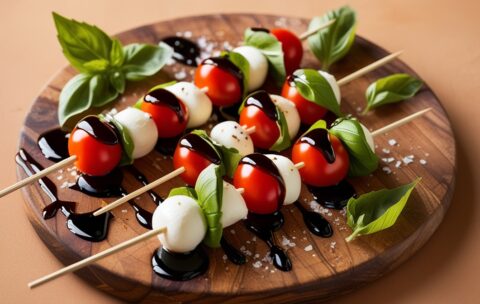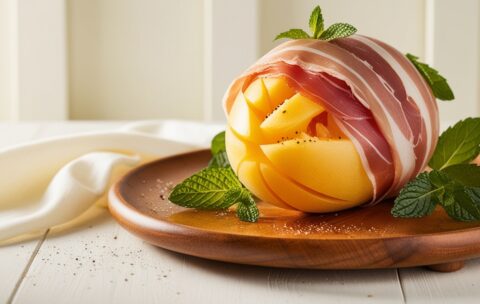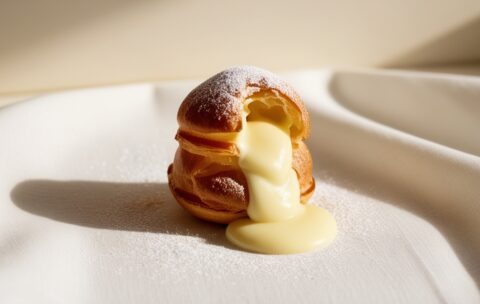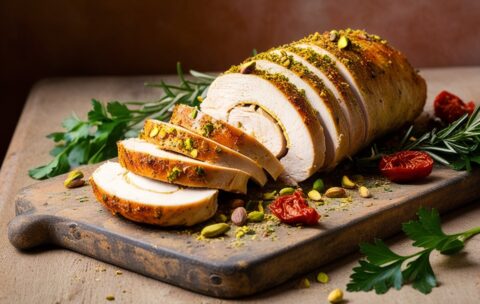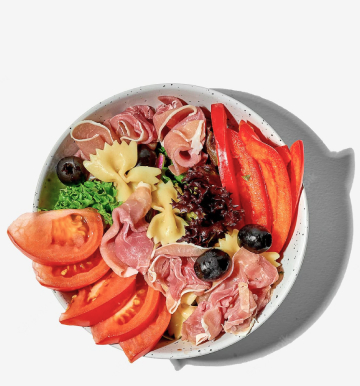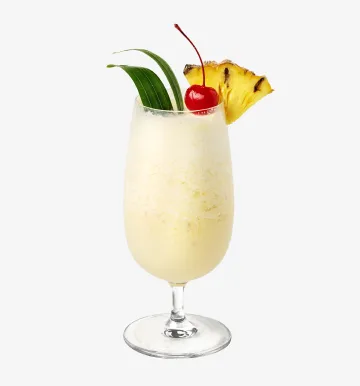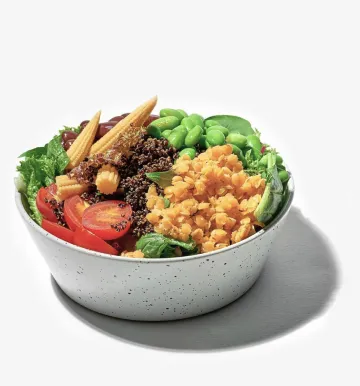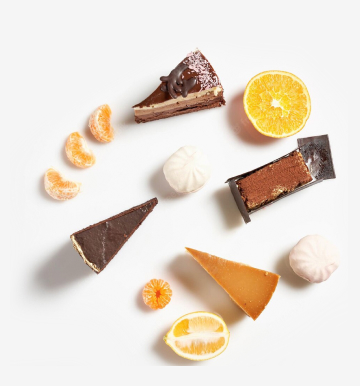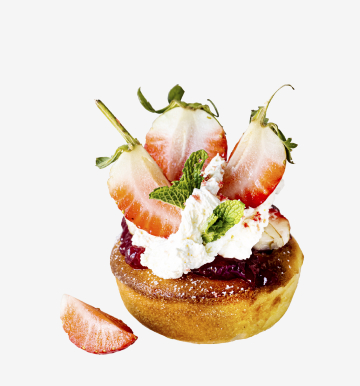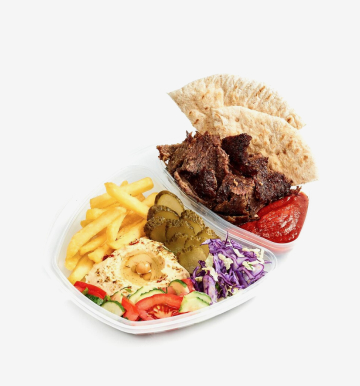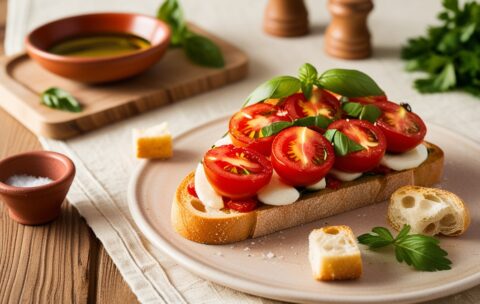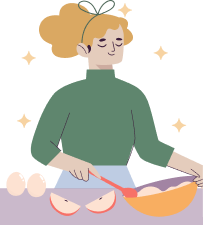Home Update 02
October 4, 2023 2025-06-05 13:04Home Update 02
Become a Home Chef
Learn to cook from scratch and master restaurant-quality meals in your own kitchen. Perfect for beginners and food lovers.

Our Top Courses
We've selected the best programs to get you started. Each course offers step-by-step lessons, hands-on recipes, and guaranteed results — even for beginners.
Thai Mango & Green Papaya Salad
4 Lessons
2.4 hours
Intermediate
What you'll learn
Ingredient Prep: How to julienne mango and shred green papaya for optimal texture.
Dressing Mastery: Whisking the classic Thai dressing with fish sauce (or vegan substitute), lime, palm sugar, and chilies.
Texture & Balance: Layering crunchy peanuts, toasted coconut flakes, and fresh Thai basil or cilantro.
Spice Control: Adjusting heat levels with fresh bird’s-eye chilies, chili flakes, or chili paste.
Plating & Garnish: Presenting vibrant colors and garnishes—flower petals, lime wheels, and herb sprigs.
Syrniki with Sour Cream and Berry Jam
3 Lessons
1.8 hour
Intermediate
What you'll learn
Choosing & Preparing Cheese
How to select the right fresh farmer’s cheese (tvorog or quark) for optimal moisture and texture.
Techniques for draining excess liquid to avoid overly wet dough.
Dough Formation & Consistency
Balancing ingredients—cheese, eggs, flour, and a hint of sugar—to achieve a tender but firm pancake batter.
Adjusting flour amounts based on cheese moisture to prevent stickiness while preserving fluffiness.
Shaping & Frying Techniques
Forming uniform rounds without overworking the dough, ensuring even cooking.
Controlling pan temperature and oil quantity for a crisp exterior and soft interior.
Accompaniments & Serving
Preparing sour cream to the right consistency—stirring in lemon zest or sugar if desired.
Selecting or making berry jam (strawberry, raspberry, or mixed) to enhance sweetness and color contrast.
Plating strategies that showcase the contrast between golden syrniki and vibrant toppings.
Flavor Variations & Customizations
Ideas for adding vanilla, citrus zest, or cinnamon directly to the batter for subtle flavor boosts.
Alternative toppings such as honey, fresh fruit slices, or nut butters.
Spinach and Artichoke Dip Bites
3 Lessons
2 hours
Intermediate
What you'll learn
How to prepare and drain fresh spinach without excess moisture.
Techniques for chopping and seasoning canned or fresh artichoke hearts.
Methods to combine cheeses (cream cheese, mozzarella, Parmesan) for optimal creaminess.
How to fill and bake mini pastry shells (phyllo cups or mini tart shells) to prevent sogginess.
Timing and temperature control to achieve a golden crust and melted interior.
Caprese Skewers with Balsamic Glaze
4 Lessons
1.8 hour
Intermediate
What you'll learn
Selecting and preparing ripe cherry tomatoes, fresh basil, and high-quality mozzarella for optimal flavor.
Assembling skewers with balanced proportions to ensure each bite features tomato, cheese, and basil.
Creating a silky balsamic glaze by reducing balsamic vinegar to the perfect viscosity.
Techniques for drizzling glaze artistically for presentation.
Storing and transporting assembled skewers without compromising texture or appearance.
Flavor pairing suggestions (e.g., adding a sprinkle of sea salt, cracked pepper, or a drizzle of olive oil).
Paella Valenciana
2 Lessons
3.3 hours
Intermediate
What you'll learn
History and Regional Context
Origins of Paella Valenciana and its connections to Valencian agricultural traditions.
Distinctions between classic Valencian paella, seafood paella (Paella de Mariscos), and other regional variants.
Selecting and Preparing Ingredients
Rice varieties (Bomba vs. Calasparra) and their impact on texture.
Choosing quality proteins (chicken and/or rabbit), native beans (judía verde, garrafó), olive oil, and saffron threads.
Preparing vegetables: green beans (bajoqueta), garrafó beans, fresh tomatoes, and garlic.
Cooking Techniques and Timing
Building a sofrito base: sautéing meat, vegetables, and spices to develop depth of flavor.
Proper rice-to-liquid ratio and how to incorporate stock infused with saffron.
Achieving the prized socarrat (crispy rice crust) without burning.
Adjusting heat levels for even cooking and optimal moisture absorption.
Presentation and Serving
Traditional ways to serve Paella Valenciana—family style straight from the paellera.
Garnishing options (lemon wedges, fresh parsley) to enhance aroma and appearance.
Tips for reheating and storing leftovers without compromising texture.
Pavlova
4 Lessons
3.3 hours
Intermediate
What you'll learn
Meringue Fundamentals (Paragraph + List):
You’ll understand how to whip egg whites to the correct stiffness and fold in sugar without deflating the mixture.
Recognize stages of beaten egg whites (soft peaks → stiff peaks).
Techniques for incorporating sugar gradually.
Identifying when the meringue mixture is ready for baking.
**Shaping & Baking Techniques (Table):
Step Key Tip
Piping vs. Spreading Use a piping bag for defined edges; spread with a spatula for a rustic look.
Forming a Well Create a shallow indentation in the center to hold cream and fruit.
Oven Temperature Start at 120 °C (250 °F) for 15 min, then reduce to 90 °C (200 °F) to dry.
This table highlights how small adjustments in technique and temperature impact the final texture.
Cream & Fruit Assembly (Paragraph):
Learn to prepare stabilized whipped cream so it holds shape, and choose complementary fruits (e.g., kiwi, berries, passion fruit) to balance sweetness and acidity.
Caramelized Banana
2 Lessons
2.4 hours
Intermediate
What you'll learn
Banana Selection & Ripeness
How to choose bananas at the peak of sweetness and proper firmness for caramelizing.
Recognizing visual and tactile cues that indicate ideal ripeness.
Caramel Sauce Preparation
Techniques for melting and browning sugar without burning—achieving a smooth, amber-hued caramel.
Balancing sweetness and depth by adjusting cook time and adding flavor enhancers like vanilla or citrus.
Cooking & Coating Bananas
Proper slicing methods to ensure even cooking.
Timing the addition of butter and bananas so the fruit softens without turning mushy.
Tips for gently tossing banana slices in hot caramel to create uniform coating.
Serving & Pairing Ideas
Creative ways to plate caramelized bananas as a standalone dessert or as a component (pancakes, waffles, yogurt, ice cream).
Garnish suggestions—nuts, herbs, spice dustings—to add texture and color contrast.
Storage and make-ahead strategies to preserve caramel’s texture and banana integrity.
Prosciutto-Wrapped Melon
4 Lessons
2 hours
Intermediate
What you'll learn
How to select the best melon (e.g., cantaloupe or honeydew) for optimal sweetness and texture
How to choose high-quality prosciutto (understanding different curing methods and grades)
Proper slicing and portioning techniques for both melon and prosciutto
Tips for assembling prosciutto strips and melon wedges so they stay intact and look polished
Flavor-pairing insights (e.g., drizzling aged balsamic or adding a fresh herb garnish)
Profiteroles with Custard
3 Lessons
1.3 hour
Intermediate
What you'll learn
How to prepare and bake pâte à choux (choux pastry) to produce perfectly puffed profiterole shells.
The step-by-step process for cooking a smooth, lump-free vanilla custard (crème pâtissière).
Techniques for piping and stuffing profiterole shells without causing them to collapse.
How to make a simple yet luscious chocolate sauce (ganache-style) for drizzling or dipping.
Presentation tips for arranging profiteroles on a platter or creating a classic croquembouche-style tower.
Chicken Roulade with Pistachios and Sun-Dried Tomatoes
3 Lessons
3 hours
Intermediate
What you'll learn
How to butterfly and pound chicken breasts for uniform thinness
Techniques for layering and rolling a filled roulade to ensure a tight spiral
Methods for achieving a golden sear and finishing in the oven without drying the chicken
Creating a complementary lemon-herb pan sauce using deglazed fond, white wine, and fresh herbs
Proper slicing and plating to showcase the roulade’s pinwheel cross-section
Choose Your Category
Our courses are grouped by category to help you find what suits your taste. From quick dinners to gourmet desserts — start with what inspires you.



About Our Culinary Journey
We are passionate about bringing the joy of cooking to everyone. Our mission is to empower food lovers with the skills and confidence to create delicious meals at home. With expert chefs, innovative teaching methods, and a love for culinary arts, we’re here to inspire your kitchen adventures.
Our Commitment
Everyone can cook well. Our courses offer clear guidance to ensure success for all skill levels.
Community Focus
Join our foodie community. Share creations and grow in a supportive environment.
Why Choose Our Culinary Courses?
Our courses are designed to make cooking fun, accessible, and inspiring. Whether you're a beginner or a seasoned cook, our unique features will help you elevate your skills and unleash your culinary creativity.

Expert Instructors
Learn from world-class chefs with years of experience. Our instructors guide you step-by-step, sharing professional tips.
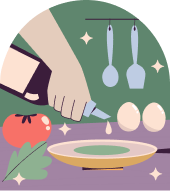
Flexible Learning
Study at your own pace, anytime, anywhere. Our online platform offers 24/7 access to lessons, so you can fit cooking into your busy schedule.

Hands-On Recipes
Practice with real recipes designed for all skill levels. From classic dishes to modern creations, you’ll master meals that impress every time.
What Our
Students Say
Hear from our happy students who have transformed their cooking skills with our courses. From beginners to seasoned cooks, our community loves sharing their success stories!
"This course completely changed how I cook! The instructors are so knowledgeable, and the lessons are easy to follow. I’m now confident making dishes I never thought I could."
Emma Johnson
"I love the flexibility of these courses. I can learn at my own pace and still feel supported. The recipes are amazing, and I’ve impressed my family with new dishes!"
Michael Chen
"The vegan cooking course was a game-changer for me. I learned so many creative ways to make plant-based meals that taste incredible. Highly recommend!"
Sophie Martinez
"The hands-on approach made learning so fun! I went from burning toast to baking artisan bread in weeks. Thank you for such an inspiring experience!"
James Carter
Discover Our Newest Culinary Courses
Get inspired by our latest additions! These exciting courses bring fresh ideas and techniques to your kitchen, perfect for food lovers eager to try something new. Browse our carousel to find your next culinary adventure.
French Gateau & Entremet Principles
2 Lessons
1.3 hour
Intermediate
What you'll learn
Fundamental Structures: How to build entremets layer by layer—choosing and baking the right sponge (génoise, Joconde, biscuit cuillère), creating thin croustillant layers, and assembling mousse and bavarois tiers for height and stability.
Texture & Temperature Management: Techniques to ensure each component sets properly (e.g., mousse firmness, gelatin bloom, glaze viscosity) and how to keep layers distinct without bleeding.
Flavor Profiling & Balance: Pairing fruit purées, chocolate, nuts, and creams to achieve harmonious taste profiles. Understanding acidity, sweetness, and how to cut richness with complementary elements (fruit inserts, crunchy praline).
Advanced Finishing Techniques: Preparing and applying a smooth mirror glaze, torching velour sprays, using transfer sheets, and piping delicate decorations. Learning how to achieve a polished, professional look every time.
Assembly & Troubleshooting: Best practices for unmolding, repositioning, and storing entremets. Identifying and correcting common issues—sogginess, collapsed layers, uneven glazes.
Presentation & Plating: Strategies for cutting perfectly even slices, garnishing with textures (tuile, cocoa nibs, spun sugar), and arranging plated portions so they look as good as they taste.
Bruschetta al Pomodoro
2 Lessons
3.3 hours
Intermediate
What you'll learn
How to select and prepare the ripest, most flavorful tomatoes for maximum sweetness and juiciness.
Proper technique for toasting bread to achieve a crisp exterior and tender crumb.
Balancing acidity, sweetness, and texture in a simple tomato-garlic-basil mixture.
Chopping methods to ensure uniform tomato pieces and even seasoning distribution.
Infusing olive oil with garlic and herbs to enhance overall flavor.
Presentation tips for arranging bruschetta on a platter or serving board.
Salmon Confit on Baby Spinach
4 Lessons
1.4 hour
Intermediate
What you'll learn
How to choose high-quality salmon for confit (fresh-fish selection, portion sizes)
Steps to prepare the poaching oil with aromatics (garlic, thyme, citrus)
Technique for gently poaching salmon at a precise low temperature (175–185 °F / 80–85 °C)
Preparing baby spinach with a light lemon-mustard vinaigrette (emulsion basics)
Methods for plating so the salmon and spinach complement each other visually and texturally
Crêpe Suzette
3 Lessons
3.3 hours
Intermediate
What you'll learn
Techniques for cooking crêpes evenly in a nonstick pan (temperature control, batter spread).
Steps to prepare an aromatic orange–butter sauce with fresh citrus zest and juice.
Proper method of adding liqueur and safely flambéing to develop caramelized notes.
Plating and folding options that highlight the vibrant orange sauce.
Tips for timing so crêpes remain warm and supple when served.
Ingredient substitutions (e.g., Cointreau or Grand Marnier, using mandarin or tangerine zest).
Blooming Gelatin Basics
2 Lessons
2.6 hours
Intermediate
What you'll learn
The difference between naked and semi-naked finishes
How to achieve even cake layers with minimal frosting
Techniques for crumb coating and thin buttercream application
Decorating ideas: fresh flowers, fruit, and simple drizzles
Tips for maintaining stability despite lighter frosting
Diamond Is Forever Martini
3 Lessons
59 minutes
Intermediate
What you'll learn
Ingredient Selection: How to choose the finest vodka or gin, the right sparkling wine, and food-grade iridescent dust (or edible glitter) for a dazzling effect.
Balance & Proportion: Techniques for blending spirit, vermouth (if using gin), and sparkling wine so that bubbles and glitter remain suspended.
Shake vs. Stir Techniques: When to shake for aeration and shimmer, and when to stir for a clearer, smoother presentation.
Sparkle Infusion: Methods for adding edible dust or glitter so that it floats and catches light without clumping or sinking.
Presentation & Garnish: Ways to rim the glass with sugar or fine glitter, and craft a minimalist twist or crystal garnish to enhance the “diamond” theme.
Fish & Chips
7 Lessons
2.3 hours
Intermediate
What you'll learn
How to choose and prepare the right white fish (e.g., cod, haddock) for firm, flaky results.
Techniques for making a light, airy beer batter that clings evenly and fries to a golden crisp.
Step-by-step instructions for cutting, soaking, and rinsing potatoes to achieve chip-worthy texture.
Best practices for oil temperature control (325–350 °F) to avoid greasy or undercooked coating.
Tips for drying and seasoning fish and chips immediately after frying to lock in crunch.
Suggestions for traditional condiments and plating: malt vinegar, tartar sauce, mushy peas, and lemon wedges.
Bloody Mary
3 Lessons
1.7 hour
Intermediate
What you'll learn
How to balance tomato juice, vodka, and spice for a perfectly seasoned cocktail.
Techniques for layering Worcestershire sauce, hot sauce, and horseradish to build depth of flavor.
Proper methods to rim a glass (celery salt, pepper, or spice blend) for added texture and taste.
Creative garnish arrangements—from classic celery stalks to pickles, olives, and bacon.
Ways to customize heat level and saltiness to suit different preferences.
Tips for preparing a large batch (pitcher or bar-style) without sacrificing freshness.
Mastering Chocolate Cakes
4 Lessons
1.4 hour
Intermediate
What you'll learn
Ingredient Essentials
Understanding Dutch-process vs. natural cocoa
Choosing between all-purpose, cake, and bread flour
Role of oil vs. butter for moisture
Batter Techniques
Creaming method for light layers
One-bowl “melted-chocolate” method for dense cakes
Whipping egg whites for chiffon-style chocolate cake
Baking & Structure
Oven temperature calibration and its impact on rise
Tips for level cakes: pan prep, baking strips, and testing doneness
Troubleshooting: sunken centers, gummy crumbs, uneven tops
Fillings & Frostings
Crafting silky chocolate ganache (TABLE BELOW)
Whipped chocolate buttercream vs. Swiss meringue buttercream
Simple whipped cream and mousse fillings
Decoration & Assembly
Stack and level layers with a cake comb and turntable
Smooth crumb coat, final coat, and ganache drip techniques
Simple piping (star tips) and fresh-fruit accents
Frosting Type Key Ingredients Best Use Case
Chocolate Ganache Equal parts dark chocolate & cream Drip cakes, glossy finishes
Swiss Meringue Buttercream Egg whites, sugar, butter, cocoa Stable layer cakes, rosettes
Whipped Chocolate Buttercream Butter, cocoa powder, powdered sugar, milk Light filling, quick spreads
Paella Valenciana
2 Lessons
3.3 hours
Intermediate
What you'll learn
History and Regional Context
Origins of Paella Valenciana and its connections to Valencian agricultural traditions.
Distinctions between classic Valencian paella, seafood paella (Paella de Mariscos), and other regional variants.
Selecting and Preparing Ingredients
Rice varieties (Bomba vs. Calasparra) and their impact on texture.
Choosing quality proteins (chicken and/or rabbit), native beans (judía verde, garrafó), olive oil, and saffron threads.
Preparing vegetables: green beans (bajoqueta), garrafó beans, fresh tomatoes, and garlic.
Cooking Techniques and Timing
Building a sofrito base: sautéing meat, vegetables, and spices to develop depth of flavor.
Proper rice-to-liquid ratio and how to incorporate stock infused with saffron.
Achieving the prized socarrat (crispy rice crust) without burning.
Adjusting heat levels for even cooking and optimal moisture absorption.
Presentation and Serving
Traditional ways to serve Paella Valenciana—family style straight from the paellera.
Garnishing options (lemon wedges, fresh parsley) to enhance aroma and appearance.
Tips for reheating and storing leftovers without compromising texture.




